An open film production also means open access to the production team – so, we’re pleased to introduce the Project Gooseberry team here. Get to know who’s working on what, what else they’ve done, and ask us your questions!
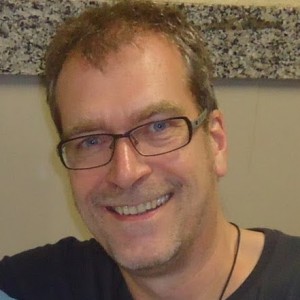 Ton Roosendaal, Producer The Father of Blender is also the man behind Project Gooseberry. Ton has hand-selected all the team members working on the film and oversees the overall production process, making sure the film gets financed and realized and that all his Blenderlings are healthy and happy and doing their best work on task. This is all, of course, in addition to all his regular duties for the Blender Foundation, through which he’s managed his open-source Blender 3D software since 2002. Follow Ton on Twitter.
Ton Roosendaal, Producer The Father of Blender is also the man behind Project Gooseberry. Ton has hand-selected all the team members working on the film and oversees the overall production process, making sure the film gets financed and realized and that all his Blenderlings are healthy and happy and doing their best work on task. This is all, of course, in addition to all his regular duties for the Blender Foundation, through which he’s managed his open-source Blender 3D software since 2002. Follow Ton on Twitter.
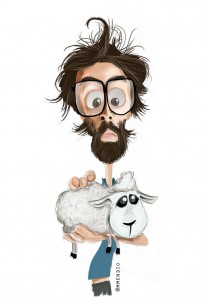 Mathieu Auvray, Director French director Mathieu has been making movies for almost 10 years now. He began his studies in applied arts before moving on to a BTS in film editing. In Paris, he initially worked as a 2D artist in the French collective Nobrain (which later became Sabotage Studio), compositing, designing music videos, TV idents, opening credits, everything but 3D. As he slowly started to shift to 3D animation, open-source Blender was his tool of choice. Eventually he was creating entire short films in Blender for the production company Autour de Minuit, plus a TV series called Babioles, which won a Suzanne Award. Based on his impressive portfolio, Ton asked Mathieu’s team to be one of the studios involved in the Gooseberry project…before asking Mathieu if he would direct the whole thing at Blender Con 2013. The rest is, as they say, history in the making. Explore Mathieu’s work on his website and follow him on Vimeo or Twitter.
Mathieu Auvray, Director French director Mathieu has been making movies for almost 10 years now. He began his studies in applied arts before moving on to a BTS in film editing. In Paris, he initially worked as a 2D artist in the French collective Nobrain (which later became Sabotage Studio), compositing, designing music videos, TV idents, opening credits, everything but 3D. As he slowly started to shift to 3D animation, open-source Blender was his tool of choice. Eventually he was creating entire short films in Blender for the production company Autour de Minuit, plus a TV series called Babioles, which won a Suzanne Award. Based on his impressive portfolio, Ton asked Mathieu’s team to be one of the studios involved in the Gooseberry project…before asking Mathieu if he would direct the whole thing at Blender Con 2013. The rest is, as they say, history in the making. Explore Mathieu’s work on his website and follow him on Vimeo or Twitter.
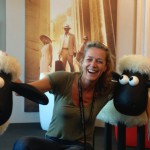 Esther Wouda, Scriptwriter Working under the name Gloworm Film, Esther is an Amsterdam-based scriptwriter, script coach, and all-around writer for TV, film, theatre, games, and the web. Esther writes scripts for various formats and media, and offers story advice for writers, directors, producers, broadcasters, and funders. If you’re a Blender fan, though, you know her primarily for one thing: she was also the scriptwriter for Sintel. Now she gets the chance to recreate that magic on another, longer Blender film (see The Film for the plot to date). Hear about her process from the woman herself, plus the Gooseberry director, in this video by Mathieu. Find out about Esther’s other work on her website, and follow her on Facebook and Twitter.
Esther Wouda, Scriptwriter Working under the name Gloworm Film, Esther is an Amsterdam-based scriptwriter, script coach, and all-around writer for TV, film, theatre, games, and the web. Esther writes scripts for various formats and media, and offers story advice for writers, directors, producers, broadcasters, and funders. If you’re a Blender fan, though, you know her primarily for one thing: she was also the scriptwriter for Sintel. Now she gets the chance to recreate that magic on another, longer Blender film (see The Film for the plot to date). Hear about her process from the woman herself, plus the Gooseberry director, in this video by Mathieu. Find out about Esther’s other work on her website, and follow her on Facebook and Twitter.
 Sarah Laufer, Concept Artist, Art Direction, Animator, etc. Born in Brussels, raised in Costa Rica, Sarah received her animation education at Supinocom in Valenciennes, France — where her final project was nominated in the Sundance Film Festival! Sarah then returned to Costa Rica to work with Marte Studio. It was there she met Gooseberry rigger Daniel Salazar, who introduced Sarah to the Blender software when she was looking for a new program to work in with more possibilities and less greedy commercialism. 5 years ago, Sarah and Daniel began their own Pataz Studio. Next to this she worked as a 3D-Animation Career Coordinator and Professor of Animation at CETAV, a school that offers a free two-year technical study to San Jose’s unemployed youths, and also taught rigging at Universidad Veritas, the first Costa Rican school to offer courses in 3D. When Pataz Studio was chosen as one of the 12 studios to work on the Gooseberry project, Sarah wanted to be even closer to the project – and her enthusiasm and varied artistic talents landed her a spot in the Amsterdam studio. In addition to the Pataz Studio website and Facebook page, you can follow Sarah’s work on Vimeo.
Sarah Laufer, Concept Artist, Art Direction, Animator, etc. Born in Brussels, raised in Costa Rica, Sarah received her animation education at Supinocom in Valenciennes, France — where her final project was nominated in the Sundance Film Festival! Sarah then returned to Costa Rica to work with Marte Studio. It was there she met Gooseberry rigger Daniel Salazar, who introduced Sarah to the Blender software when she was looking for a new program to work in with more possibilities and less greedy commercialism. 5 years ago, Sarah and Daniel began their own Pataz Studio. Next to this she worked as a 3D-Animation Career Coordinator and Professor of Animation at CETAV, a school that offers a free two-year technical study to San Jose’s unemployed youths, and also taught rigging at Universidad Veritas, the first Costa Rican school to offer courses in 3D. When Pataz Studio was chosen as one of the 12 studios to work on the Gooseberry project, Sarah wanted to be even closer to the project – and her enthusiasm and varied artistic talents landed her a spot in the Amsterdam studio. In addition to the Pataz Studio website and Facebook page, you can follow Sarah’s work on Vimeo.
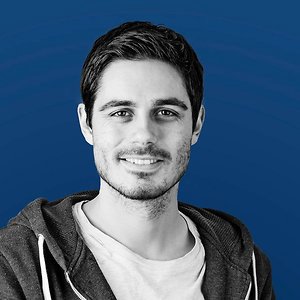 Hjalti Hjálmarsson, Animator Hjalti has a broad design media background: he started playing around in 3D as a teen, which led to studies in computer science, graphic design (from 3D modelling to typography), and later animation, with a side of programming – you know, just for fun. He’s been working as a character animator, designer, and rigger in advertising industry for over 7 years. His animations have won several awards in his native Iceland – plus a Suzanne Award! Blenderheads would know his work from Caminades 2: Gran Dillama best. A little Twitter networking led to a SIGGRAPH meet-up…and now Gooseberry! Check out Hjalti’s showreel on his website and follow him on Twitter and Vimeo.
Hjalti Hjálmarsson, Animator Hjalti has a broad design media background: he started playing around in 3D as a teen, which led to studies in computer science, graphic design (from 3D modelling to typography), and later animation, with a side of programming – you know, just for fun. He’s been working as a character animator, designer, and rigger in advertising industry for over 7 years. His animations have won several awards in his native Iceland – plus a Suzanne Award! Blenderheads would know his work from Caminades 2: Gran Dillama best. A little Twitter networking led to a SIGGRAPH meet-up…and now Gooseberry! Check out Hjalti’s showreel on his website and follow him on Twitter and Vimeo.
 Beorn Leonard, Animator Beorn Leonard began using the Blender software about 9 years ago when looking for an open-source option without the limitations his TV studio colleagues in his native Melbourne, Australia were experiencing with 3DS Max. Blenderheads, you might be familiar with his first experiment with character animation: the short A Sad, Sad Song, which came in second place at the Suzanne Awards. When he moved to Amsterdam in 2009 with his Dutch girlfriend, he got involved in the Sintel project, and later went on to work on the Caminandes films as well. When Beorn is not working fulltime on Blender Institute projects, he works as a freelancer, lending his animation expertise to everything from feature films (like The Lego Movie) to tutorials. Check out Beorn’s previous work on his website and Vimeo channel. And follow his activities on G+ and Facebook (though, sorry, he can’t accept everyone’s friend requests!).
Beorn Leonard, Animator Beorn Leonard began using the Blender software about 9 years ago when looking for an open-source option without the limitations his TV studio colleagues in his native Melbourne, Australia were experiencing with 3DS Max. Blenderheads, you might be familiar with his first experiment with character animation: the short A Sad, Sad Song, which came in second place at the Suzanne Awards. When he moved to Amsterdam in 2009 with his Dutch girlfriend, he got involved in the Sintel project, and later went on to work on the Caminandes films as well. When Beorn is not working fulltime on Blender Institute projects, he works as a freelancer, lending his animation expertise to everything from feature films (like The Lego Movie) to tutorials. Check out Beorn’s previous work on his website and Vimeo channel. And follow his activities on G+ and Facebook (though, sorry, he can’t accept everyone’s friend requests!).
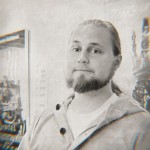 Manu Järvinen, Modeller/Lighter Since studying 3D Animation and Visualisation at Metropolia University of Applied Sciences, Manu has worked with several studios – for the past 4 years entertainment company Rovio. (Yep, the “Angry Birds” people.) After 4 years of using 3ds Max, Manu first started using Blender under the influence of friends in 2009. Later he became more active in the Blender community and eventually went completely open-source throughout his entire personal workflow. His challenge to himself in this experiment is to show that free software can make just as much beauty as the commercial versions. Luckily, director Mathieu, Ton, and Julius Tuomisto from the Finnish Studio Lumikuu (“Snow Moon”) saw his work and liked it, and Manu was asked to join the Gooseberry project. Once the decision was made to make the pilot first, Manu was asked to come to the Amsterdam studio to help realize it. See Manu’s work for yourself on his website, and follow him on Twitter and YouTube.
Manu Järvinen, Modeller/Lighter Since studying 3D Animation and Visualisation at Metropolia University of Applied Sciences, Manu has worked with several studios – for the past 4 years entertainment company Rovio. (Yep, the “Angry Birds” people.) After 4 years of using 3ds Max, Manu first started using Blender under the influence of friends in 2009. Later he became more active in the Blender community and eventually went completely open-source throughout his entire personal workflow. His challenge to himself in this experiment is to show that free software can make just as much beauty as the commercial versions. Luckily, director Mathieu, Ton, and Julius Tuomisto from the Finnish Studio Lumikuu (“Snow Moon”) saw his work and liked it, and Manu was asked to join the Gooseberry project. Once the decision was made to make the pilot first, Manu was asked to come to the Amsterdam studio to help realize it. See Manu’s work for yourself on his website, and follow him on Twitter and YouTube.
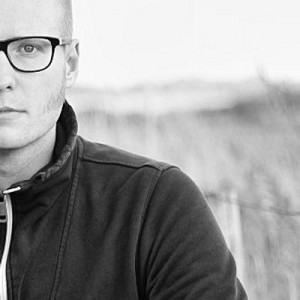 Andy Goralczyk, Texturer, Lighting Designer, Compositor, Renderer Andy has been working with Blender for about 15 years now (since he was in high school), and if you’ve ever been to a Blender Conference you’ve probably met him — he’s been to all of them. After some early (for the industry) open-source short film experiments of his own, Andy joined the Institute to work on Elephants Dream (the Institute’s first short film), Big Buck Bunny, Tears of Steel, and Caminandes 2. The studio has been eagerly awaiting his arrival…but first he had the little matter of wrapping up his graduate degree in Media Arts at the College of Arts & Design in Karlsruhe, Germany. Luckily for us, that was completed in November with his (Blender-designed) 3D-printed robotic garden. Now, for Cosmos Laundromat, he will work on a combination of texturing details (starting with Victor’s facial hair) and the important “finishing touches”, from shading and lighting to compositing and rendering. Meaning he’ll be on board through the end of the pilot production…and perhaps longer. Visit Andy’s website or follow him on Twitter and Facebook.
Andy Goralczyk, Texturer, Lighting Designer, Compositor, Renderer Andy has been working with Blender for about 15 years now (since he was in high school), and if you’ve ever been to a Blender Conference you’ve probably met him — he’s been to all of them. After some early (for the industry) open-source short film experiments of his own, Andy joined the Institute to work on Elephants Dream (the Institute’s first short film), Big Buck Bunny, Tears of Steel, and Caminandes 2. The studio has been eagerly awaiting his arrival…but first he had the little matter of wrapping up his graduate degree in Media Arts at the College of Arts & Design in Karlsruhe, Germany. Luckily for us, that was completed in November with his (Blender-designed) 3D-printed robotic garden. Now, for Cosmos Laundromat, he will work on a combination of texturing details (starting with Victor’s facial hair) and the important “finishing touches”, from shading and lighting to compositing and rendering. Meaning he’ll be on board through the end of the pilot production…and perhaps longer. Visit Andy’s website or follow him on Twitter and Facebook.
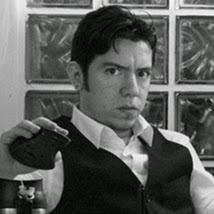 Pablo Vazquez, Lighting/Shading Designer, Web Developer, etc. Blender is the first and only 3D software Pablo has ever used in his 12 years of modelling and animation — he wanted to be able to play with the comic-book characters he was drawing in 3D. After teaching himself modelling, texturing, etc., in his hometown in Patagonia, Argentina, he first got attention in the Blender community when one of his characters was featured on the Blender splash screen. This led to work on Plumiferos, the first feature film made in Blender…which led to work with the Institute himself. When not travelling the world teaching and speaking, Pablo has been involved in the creation of Yo Frankie!, Sintel, training DVDs Venom’s Lab 1 & 2, and he is the mind behind both Caminandes movies. For the Gooseberry project, Pablo spends one day each week on web development, and the rest of his time designing lighting and shading, rendering, compositing — basically setting the mood for the final shots, as well as anything else that needs done. Follow Pablo on his website, Twitter, Facebook, and YouTube.
Pablo Vazquez, Lighting/Shading Designer, Web Developer, etc. Blender is the first and only 3D software Pablo has ever used in his 12 years of modelling and animation — he wanted to be able to play with the comic-book characters he was drawing in 3D. After teaching himself modelling, texturing, etc., in his hometown in Patagonia, Argentina, he first got attention in the Blender community when one of his characters was featured on the Blender splash screen. This led to work on Plumiferos, the first feature film made in Blender…which led to work with the Institute himself. When not travelling the world teaching and speaking, Pablo has been involved in the creation of Yo Frankie!, Sintel, training DVDs Venom’s Lab 1 & 2, and he is the mind behind both Caminandes movies. For the Gooseberry project, Pablo spends one day each week on web development, and the rest of his time designing lighting and shading, rendering, compositing — basically setting the mood for the final shots, as well as anything else that needs done. Follow Pablo on his website, Twitter, Facebook, and YouTube.
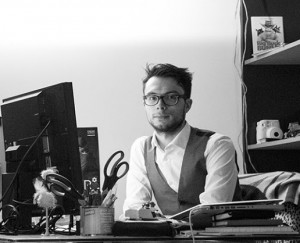 Francesco Siddi, Production Coordinator, Project & Asset Manager Francesco studied industrial design in Italy, but always had an interest in computer graphics. He discovered Blender by accident and started taking on little freelance jobs in industria previz with Blender, eventually attending his first Blender conference (and getting involved in Blender Documentation) in 2009. His first official Blender Foundation project involved wiki docs (yay!), but then he went on to work on layout and as a generalist for Tears of Steel at the Blender Institute. He and Pablo then followed that up with Tears of Steel 4K, and the two still manage the Blender Network and Blender Institute Training. Francesco worked on layout and a bit of animation for the first Caminandes movie, working as a producer for the second. Francesco was one of the few to join Team Gooseberry before the crowdfunding, and he is now working on production management and pipeline development for the film. See what Francesco’s done on his website, and follow him on Twitter and the Blender Network.
Francesco Siddi, Production Coordinator, Project & Asset Manager Francesco studied industrial design in Italy, but always had an interest in computer graphics. He discovered Blender by accident and started taking on little freelance jobs in industria previz with Blender, eventually attending his first Blender conference (and getting involved in Blender Documentation) in 2009. His first official Blender Foundation project involved wiki docs (yay!), but then he went on to work on layout and as a generalist for Tears of Steel at the Blender Institute. He and Pablo then followed that up with Tears of Steel 4K, and the two still manage the Blender Network and Blender Institute Training. Francesco worked on layout and a bit of animation for the first Caminandes movie, working as a producer for the second. Francesco was one of the few to join Team Gooseberry before the crowdfunding, and he is now working on production management and pipeline development for the film. See what Francesco’s done on his website, and follow him on Twitter and the Blender Network.
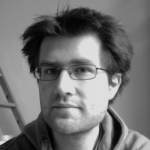 Lukas Tönne, Physics Developer Lukas was not too far away when the Gooseberry call came — he was just across the border in the German town of Aachen. He became well-known in the Blender development community, especially for his physics expertise, his work on refactoring particles, and the Python nodes he created, and his work has several times been supported by the Foundation’s Development Fund. Since he came to Amsterdam in July to begin work on Gooseberry, his focus has been on improving the quality of simulations, caching features, and tools for hair, cloth, and particles. (There’s that physics again.) Keep up with Lukas on Twitter, Google+, and YouTube. You can also get in touch with him on the #blendercoders IRC channel, where he goes by lukas_t.
Lukas Tönne, Physics Developer Lukas was not too far away when the Gooseberry call came — he was just across the border in the German town of Aachen. He became well-known in the Blender development community, especially for his physics expertise, his work on refactoring particles, and the Python nodes he created, and his work has several times been supported by the Foundation’s Development Fund. Since he came to Amsterdam in July to begin work on Gooseberry, his focus has been on improving the quality of simulations, caching features, and tools for hair, cloth, and particles. (There’s that physics again.) Keep up with Lukas on Twitter, Google+, and YouTube. You can also get in touch with him on the #blendercoders IRC channel, where he goes by lukas_t.
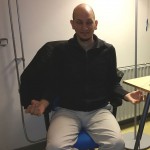 Antonis Ryakiotakis, Developer Joining us from the island of Crete, Antony (as he’s usually called around the studio) started his journey studying physics back in Greece. But, he was always really interested in 3D graphics — so he taught himself how to make them. He wanted a tool that would allow him to creative 3D models and import them into his own engine — and he quickly figured out that it would be a lot easier to use Blender than create his own software. He wanted to make improvements, though…and Google gave him the chance to do just that during the Google Summer of Code, which he did for three summers in a row. (His mentors during the last two sessions were Sergey and Lukas, respectively.) In November of last year, impressed with his work and his background in physics, Ton invited Antonis to come to Amsterdam and join the Gooseberry project. Since arriving in July, he’s been working on Gooseberry-supporting Blender tools like the sequencer, widgets, viewport…and whatever else comes his way. Follow Antonis on Twitter for updates on his work and releases.
Antonis Ryakiotakis, Developer Joining us from the island of Crete, Antony (as he’s usually called around the studio) started his journey studying physics back in Greece. But, he was always really interested in 3D graphics — so he taught himself how to make them. He wanted a tool that would allow him to creative 3D models and import them into his own engine — and he quickly figured out that it would be a lot easier to use Blender than create his own software. He wanted to make improvements, though…and Google gave him the chance to do just that during the Google Summer of Code, which he did for three summers in a row. (His mentors during the last two sessions were Sergey and Lukas, respectively.) In November of last year, impressed with his work and his background in physics, Ton invited Antonis to come to Amsterdam and join the Gooseberry project. Since arriving in July, he’s been working on Gooseberry-supporting Blender tools like the sequencer, widgets, viewport…and whatever else comes his way. Follow Antonis on Twitter for updates on his work and releases.
 Elysia Brenner, Reporter Elysia is the writer/editor putting together these words, as well as a bunch of blog posts about all aspects of the Gooseberry project. It’s her job to make sure the fans and supporters are kept up to date with everything going on here in the studio and the development of the project in general. American-born (in the Philadelphia area) and Dutch-adopted, Elysia and her writings have been Amsterdam-based for the past 8 years. A fan of technology and animation in general (thanks, Mom!), and a specialist in writing about web and 3D software (amongst other things), she was simply lucky enough to find the open call for a writer/editor on this blog…and then managed to be passionate and convincing enough to land the gig. Please feel free to contact her to recommend blog posts, request Gooseberry-related articles, or ply her for information about the specific aspects of the project that interest you most! You can find samples of Elysia’s writing on her website and follow her work on Twitter and Facebook.
Elysia Brenner, Reporter Elysia is the writer/editor putting together these words, as well as a bunch of blog posts about all aspects of the Gooseberry project. It’s her job to make sure the fans and supporters are kept up to date with everything going on here in the studio and the development of the project in general. American-born (in the Philadelphia area) and Dutch-adopted, Elysia and her writings have been Amsterdam-based for the past 8 years. A fan of technology and animation in general (thanks, Mom!), and a specialist in writing about web and 3D software (amongst other things), she was simply lucky enough to find the open call for a writer/editor on this blog…and then managed to be passionate and convincing enough to land the gig. Please feel free to contact her to recommend blog posts, request Gooseberry-related articles, or ply her for information about the specific aspects of the project that interest you most! You can find samples of Elysia’s writing on her website and follow her work on Twitter and Facebook.
 Anja Vugts-Verstappen, Finance & Administrative Manager, E-Shop Manager Actually located in Budel (near Eindhoven, in the south of the Netherlands), Anja is the woman in the background, juggling all the figures for the financial department, making sure the project stays viable, and that the project team gets paid. Anja has been working for Blender since the start of the Foundation in 2002, and it’s been her job to manage the figures for all the Institute’s projects to date. Many of you will know her as the woman who takes care of the administration for the yearly Blender Conference in Amsterdam. Or the person who responds to your e-shop emails — for which she’s also responsible for the daily administration. She’s also the one who makes sure that every book or DVD you order gets to you. Making customers happy is her favorite part of her job. Want to get in touch with Anja? Send her an email!
Anja Vugts-Verstappen, Finance & Administrative Manager, E-Shop Manager Actually located in Budel (near Eindhoven, in the south of the Netherlands), Anja is the woman in the background, juggling all the figures for the financial department, making sure the project stays viable, and that the project team gets paid. Anja has been working for Blender since the start of the Foundation in 2002, and it’s been her job to manage the figures for all the Institute’s projects to date. Many of you will know her as the woman who takes care of the administration for the yearly Blender Conference in Amsterdam. Or the person who responds to your e-shop emails — for which she’s also responsible for the daily administration. She’s also the one who makes sure that every book or DVD you order gets to you. Making customers happy is her favorite part of her job. Want to get in touch with Anja? Send her an email!
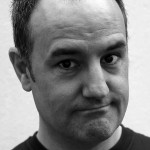 Matias Mendiola, Storyboard Artist Also going by the catchy moniker “Mendio,” Matias is a freelance artist from Argentina with about 20 years of expereince. He’s been drawing for as long as he can remember, a pencil in his hand almost since birth. Though he still spends a lot of time illustrating on paper — did you see the more than 1,000 drawings he made for the Gooseberry storyboard??? — he also expresses his artistic talent digitally, adding graphic design and animation to a varied portfolio that also includes vector drawings, web design, and back-end development. See Matias’s other work on his website, and follow him on Twitter and Google+.
Matias Mendiola, Storyboard Artist Also going by the catchy moniker “Mendio,” Matias is a freelance artist from Argentina with about 20 years of expereince. He’s been drawing for as long as he can remember, a pencil in his hand almost since birth. Though he still spends a lot of time illustrating on paper — did you see the more than 1,000 drawings he made for the Gooseberry storyboard??? — he also expresses his artistic talent digitally, adding graphic design and animation to a varied portfolio that also includes vector drawings, web design, and back-end development. See Matias’s other work on his website, and follow him on Twitter and Google+.
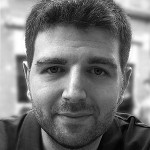 David Revoy, Concept Artist A 2D artist from France, David contributed to the visual development, concept art and previz artwork during the pre-production period of Project Gooseberry. He has also been involved in previous Blender Institute/Foundation projects, including Sintel, Tears of Steel, and the training DVDs Chaos &Evolutions and Blend & Paint (all available on the Blender Cloud). This open-source fanatic uses exclusively Gnu/Linux and even has his own free, open-source webcomic, Pepper & Carrot. In addition to his comic, you’ll find David’s portfolio of work on his website, and you can also follow him on Google+, Twitter, and Deviant Art.
David Revoy, Concept Artist A 2D artist from France, David contributed to the visual development, concept art and previz artwork during the pre-production period of Project Gooseberry. He has also been involved in previous Blender Institute/Foundation projects, including Sintel, Tears of Steel, and the training DVDs Chaos &Evolutions and Blend & Paint (all available on the Blender Cloud). This open-source fanatic uses exclusively Gnu/Linux and even has his own free, open-source webcomic, Pepper & Carrot. In addition to his comic, you’ll find David’s portfolio of work on his website, and you can also follow him on Google+, Twitter, and Deviant Art.
 Angela Guenette, Modeller Montreal-based Angela has already impressed Blenderheads everywhere with her modelling and animation work on Sintel, as well as her Blenderella training DVD (also available on the Cloud), which used the Sintel character as a basis. For Gooseberry, she’s been wowing watchers week after week with her amazing models — including the “motofly” model timelapse video she created! Find more of her work on her studio website, and follow her studio on Facebook, Twitter, Google+, and YouTube.
Angela Guenette, Modeller Montreal-based Angela has already impressed Blenderheads everywhere with her modelling and animation work on Sintel, as well as her Blenderella training DVD (also available on the Cloud), which used the Sintel character as a basis. For Gooseberry, she’s been wowing watchers week after week with her amazing models — including the “motofly” model timelapse video she created! Find more of her work on her studio website, and follow her studio on Facebook, Twitter, Google+, and YouTube.
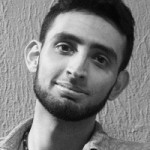 Daniel Salazar, Rigger Co-founder of Pataz Studio (with Sarah), Daniel is a fanatic technical artist focusing on the areas of rigging, rendering, digital compositing, and a free software studio pipeline. He received his education in 3D animation at Universidad Veritas in Costa Rica and has worked for major international clients like Coca Cola, Pepsi, and Discovery Communications. For Gooseberry, his primary task has been rigging — both when he was working here in the Amsterdam studio and since returning home to Costa Rica. Check out his reel on his personal website, see more of his work on his studio website, and follow him on Twitter, Facebook, Google+, and YouTube or his studio’s Facebook page.
Daniel Salazar, Rigger Co-founder of Pataz Studio (with Sarah), Daniel is a fanatic technical artist focusing on the areas of rigging, rendering, digital compositing, and a free software studio pipeline. He received his education in 3D animation at Universidad Veritas in Costa Rica and has worked for major international clients like Coca Cola, Pepsi, and Discovery Communications. For Gooseberry, his primary task has been rigging — both when he was working here in the Amsterdam studio and since returning home to Costa Rica. Check out his reel on his personal website, see more of his work on his studio website, and follow him on Twitter, Facebook, Google+, and YouTube or his studio’s Facebook page.
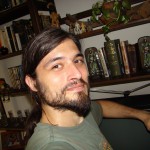 Juan Pablo Bouza, Rigger From Argentina, Juan Pablo will be Gooseberry’s other dedicated rigger. A 3D artist, film maker, and free/open software enthusiast, he’s been involved in several Blender-based film projects, including “Cronopios & Famas” (as TD, animator, editor, and sound designer) and “Caminandes 2” (as rigger). He also did the rigs for the new season of the internet series Ray & Clovis and is currently working as Character TD and Rigger for the film “Kiribati,” for which he’s developing the latest version of his rigging system for Blender, called BlenRig (which will be hopefully finished during the production of Gooseberry). Follow him on YouTube and Vimeo.
Juan Pablo Bouza, Rigger From Argentina, Juan Pablo will be Gooseberry’s other dedicated rigger. A 3D artist, film maker, and free/open software enthusiast, he’s been involved in several Blender-based film projects, including “Cronopios & Famas” (as TD, animator, editor, and sound designer) and “Caminandes 2” (as rigger). He also did the rigs for the new season of the internet series Ray & Clovis and is currently working as Character TD and Rigger for the film “Kiribati,” for which he’s developing the latest version of his rigging system for Blender, called BlenRig (which will be hopefully finished during the production of Gooseberry). Follow him on YouTube and Vimeo.
 Sergey Sharybin, Developer Sergey started using Blender as a hobbyist. With his coding background, when he inevitably ran into something Blender couldn’t yet do he thought to himself: “I can fix this.” (The pros of working with open-source software!) And that’s how he got more and more involved with the Blender community. In 2011, after he implemented a key motion-tracking feature, Ton offered him a position developing directly for the Foundation and eventually the Institute, working on Tears of Steel, Caminandes, and now Gooseberry (aka Cosmos Laundromat). After three months in the Blender studio, Sergey returned to his hometown of Perm, Russia in November to continue working on his post-graduate degree in computer graphics for applications at the Perm National Research Polytechnic University. Not that Blender is letting him go that easily – he’ll continue to work on Gooseberry and other Blender projects while he’s there, and chances are we’ll see him back in Amsterdam in the spring! Follow Sergey’s latest Blender developments on code.blender.org.
Sergey Sharybin, Developer Sergey started using Blender as a hobbyist. With his coding background, when he inevitably ran into something Blender couldn’t yet do he thought to himself: “I can fix this.” (The pros of working with open-source software!) And that’s how he got more and more involved with the Blender community. In 2011, after he implemented a key motion-tracking feature, Ton offered him a position developing directly for the Foundation and eventually the Institute, working on Tears of Steel, Caminandes, and now Gooseberry (aka Cosmos Laundromat). After three months in the Blender studio, Sergey returned to his hometown of Perm, Russia in November to continue working on his post-graduate degree in computer graphics for applications at the Perm National Research Polytechnic University. Not that Blender is letting him go that easily – he’ll continue to work on Gooseberry and other Blender projects while he’s there, and chances are we’ll see him back in Amsterdam in the spring! Follow Sergey’s latest Blender developments on code.blender.org.
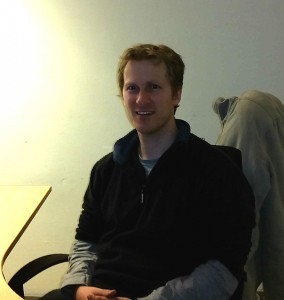 Campbell Barton, Developer Growing up outside Melbourne, Australia, Campbell was mostly home-schooled and self-taught. A multimedia course — and more 3D real-time simulation projects — led him down the Blender path. Using Blender gave him some advantages in the simulation industry, where existing popular tools for modeling and animation support weren’t so advanced. Building better Blender solutions for his new-found niche led Campbell deeper and deeper into the Blender community, and when Ton was looking for a new TD for the Big Buck Bunny project, Campbell jumped on the opportunity. He has since worked on almost every Blender open project, and was lured back to Amsterdam once again to work on the pipeline and asset management project and other general development for 3-4 months — which he is now continuing back home in Australia. Want to follow Campbell’s work? He’ll direct you to the Blender commit logs….but you can also get in touch with him on the #blendercoders IRC channel on freenode.net, where he goes by ideasman42.
Campbell Barton, Developer Growing up outside Melbourne, Australia, Campbell was mostly home-schooled and self-taught. A multimedia course — and more 3D real-time simulation projects — led him down the Blender path. Using Blender gave him some advantages in the simulation industry, where existing popular tools for modeling and animation support weren’t so advanced. Building better Blender solutions for his new-found niche led Campbell deeper and deeper into the Blender community, and when Ton was looking for a new TD for the Big Buck Bunny project, Campbell jumped on the opportunity. He has since worked on almost every Blender open project, and was lured back to Amsterdam once again to work on the pipeline and asset management project and other general development for 3-4 months — which he is now continuing back home in Australia. Want to follow Campbell’s work? He’ll direct you to the Blender commit logs….but you can also get in touch with him on the #blendercoders IRC channel on freenode.net, where he goes by ideasman42.
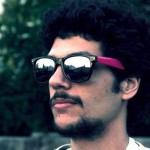 Gabriel “Eibriel” Carabello, Pipeline Developer Buenos Aires native Gabriel started working with Blender about six years ago because he liked the free/open philosophy…and because he found it simply worked better for him than the commercial software he had been using at the time. He got into Blender from the perspective of an artist and animator…but gradually drifted more and more toward the technical side. He’s spent the last couple of years working as the Technical Director for the Blender-based Argentinian 3D feature film Kiriati, working on their asset-management system and pipeline. Now he’s bringing that expertise to Blender’s pipeline. After spending two and a half months in the studio helping Francesco realize Gooseberry’s BAM plans, especially focusing on Cloud functionality, he has now returned to Argentina to continue his work. See more of Gabriel’s work on his website or follow him on Twitter, LinkedIn, and YouTube.
Gabriel “Eibriel” Carabello, Pipeline Developer Buenos Aires native Gabriel started working with Blender about six years ago because he liked the free/open philosophy…and because he found it simply worked better for him than the commercial software he had been using at the time. He got into Blender from the perspective of an artist and animator…but gradually drifted more and more toward the technical side. He’s spent the last couple of years working as the Technical Director for the Blender-based Argentinian 3D feature film Kiriati, working on their asset-management system and pipeline. Now he’s bringing that expertise to Blender’s pipeline. After spending two and a half months in the studio helping Francesco realize Gooseberry’s BAM plans, especially focusing on Cloud functionality, he has now returned to Argentina to continue his work. See more of Gabriel’s work on his website or follow him on Twitter, LinkedIn, and YouTube.
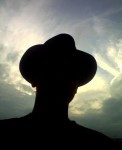 Nicholas Bishop, Developer Nicholas, a native of South Carolina by way of Brooklyn, NYC (with a stop at the University of Maryland to pick up his degree in Computer Science), spent six weeks working in the Blender studio on integrating Ptex into Blender Cycles. If you’re not familiar, Ptex is a Disney-created tool that has gone open-source, and basically offers a better texturing workflow combined with UV mapping. Nicholas has worked in 3D modeling, government contracting, and now works for Neverware, a company that brings cloud computing platforms to NYC students in need. But those of you familiar with Blender community developers might know Nicholas as the guy who wrote some of the first sculpting tools for organic modeling during the 2006 Summer of Code, adapted from his personal open-source tool-building experiments. Since, he has contributed to tools for modeling, topology, editing, etc. Now that his work in Amsterdam finishing the Ptex-integration project he started years ago is complete, he has returned to his day job in Brooklyn, but is still contributing to Blender projects on the side. Keep up with Nicholas on Twitter!
Nicholas Bishop, Developer Nicholas, a native of South Carolina by way of Brooklyn, NYC (with a stop at the University of Maryland to pick up his degree in Computer Science), spent six weeks working in the Blender studio on integrating Ptex into Blender Cycles. If you’re not familiar, Ptex is a Disney-created tool that has gone open-source, and basically offers a better texturing workflow combined with UV mapping. Nicholas has worked in 3D modeling, government contracting, and now works for Neverware, a company that brings cloud computing platforms to NYC students in need. But those of you familiar with Blender community developers might know Nicholas as the guy who wrote some of the first sculpting tools for organic modeling during the 2006 Summer of Code, adapted from his personal open-source tool-building experiments. Since, he has contributed to tools for modeling, topology, editing, etc. Now that his work in Amsterdam finishing the Ptex-integration project he started years ago is complete, he has returned to his day job in Brooklyn, but is still contributing to Blender projects on the side. Keep up with Nicholas on Twitter!
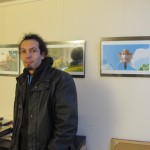 Bastien Montagne, Developer Hailing from the Western French countryside (Britannia), Bastien has been using Blender since the early days (2002), when he fell for the (in his words) “richness and complexity” of the software. (And the free thing obviously didn’t hurt either.) Bastien started using the software as an artist, and later began contributing to community as a developer. About four years ago he began making Python add-ons and C-code modifiers and other stuff. His work caught Ton’s eye, who was looking for more game-oriented developers, and he was offered a grant from the Blender Foundation to work on that and general Blender support. After 3 weeks here in Amsterdam, he continue to assist with the asset manager and other projects from France. Follow Bastien’s work on his WordPress site or Google+.
Bastien Montagne, Developer Hailing from the Western French countryside (Britannia), Bastien has been using Blender since the early days (2002), when he fell for the (in his words) “richness and complexity” of the software. (And the free thing obviously didn’t hurt either.) Bastien started using the software as an artist, and later began contributing to community as a developer. About four years ago he began making Python add-ons and C-code modifiers and other stuff. His work caught Ton’s eye, who was looking for more game-oriented developers, and he was offered a grant from the Blender Foundation to work on that and general Blender support. After 3 weeks here in Amsterdam, he continue to assist with the asset manager and other projects from France. Follow Bastien’s work on his WordPress site or Google+.
Should the Gooseberry pilot lead to a feature-length film as planned (which will depend on your support!), we will be working with 12 studios around the world to realize the project (see The Film). Each studio will be responsible for recruiting, coordinating, and facilitating their own teams. Each studio unit therefore becomes a small hub managing its own sub-network. Those hired will typically be well-connected people who are also active in Blender communities. Look out for more information on this once we’ve reached that stage of development.
Blender is known internationally for pioneering the use of open content production to drive and model the development of its free, open software. The Blender Institute is the film-making arm of Blender, including the Amsterdam studio where Cosmos Laundromat is currently in production. The Blender Institute is also responsible for the Blender Cloud, the Blender Store, and all other commercial activities.
The Blender open-source 3D software is managed by Blender.org. The Blender Foundation owns the final rights to the Blender software as well as any films completed by the Blender Institute.
The activities of the Blender Institute are independent of the Blender Foundation; however, funding for the Blender Institute covers the development of better Blender software to help us realize Gooseberry and other Institute projects. So, when we receive more financial support for the Institute projects, the Foundation can dedicate more of its money to developer grants for non-Gooseberry-related Blender improvements — such as the UI, the game engine, game-creation tools, etc. Thanks to Gooseberry funding, we were able to offer some of Blender’s best developers full-time contracts to work on more complex Blender projects, such as improving the animation system, particles, hair/cloth simulation, compositing, asset and project management, video/sound editing, and collaborative tools in general. (See the Open Software Goals section of this blog.)